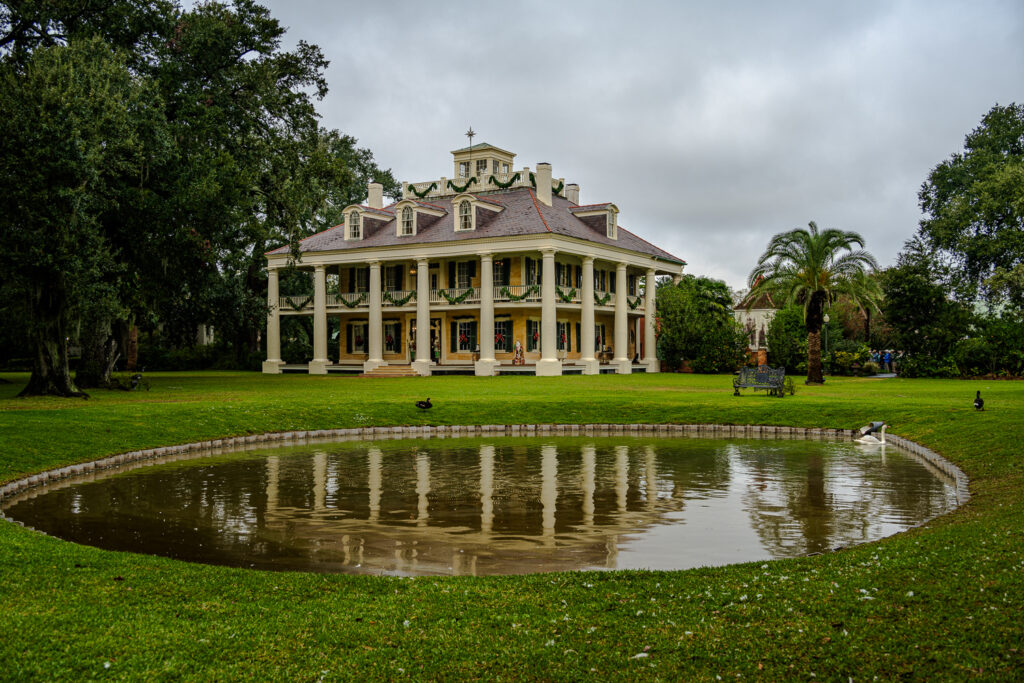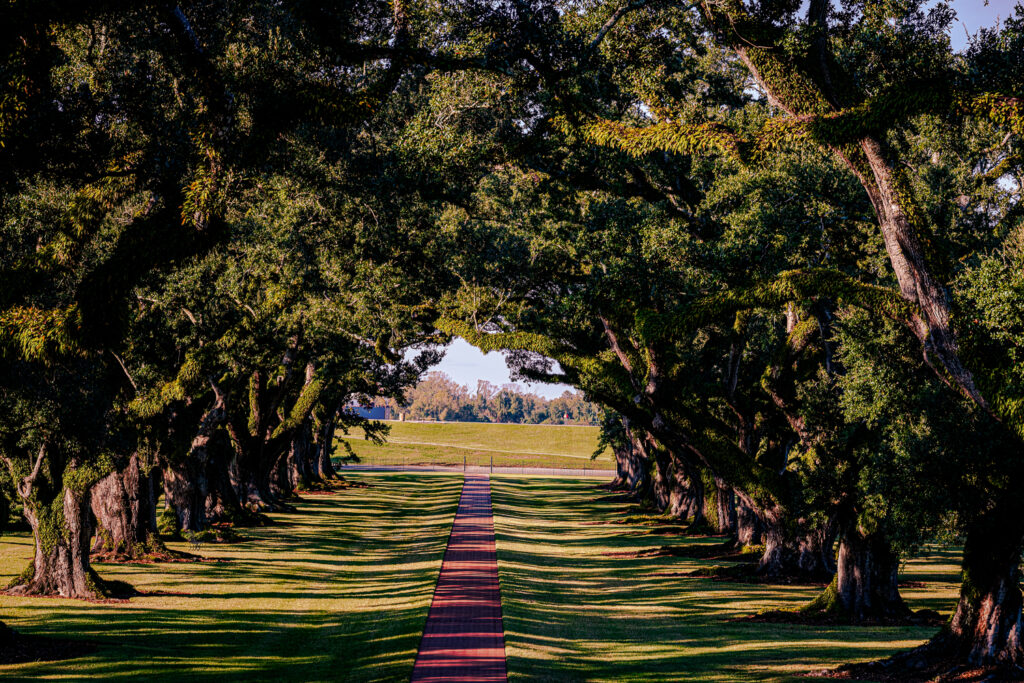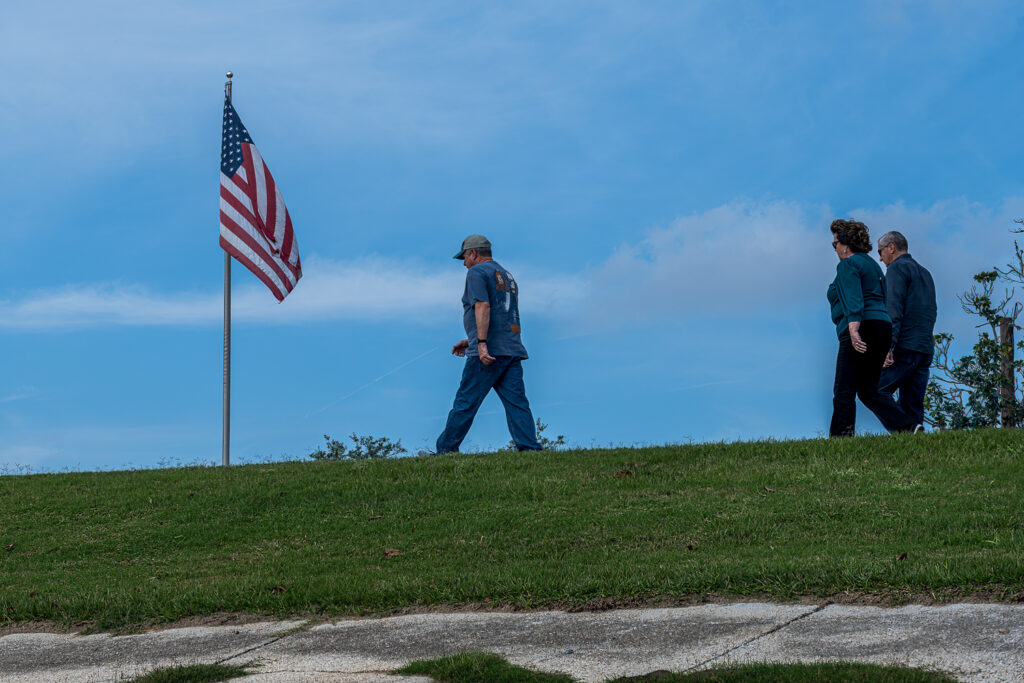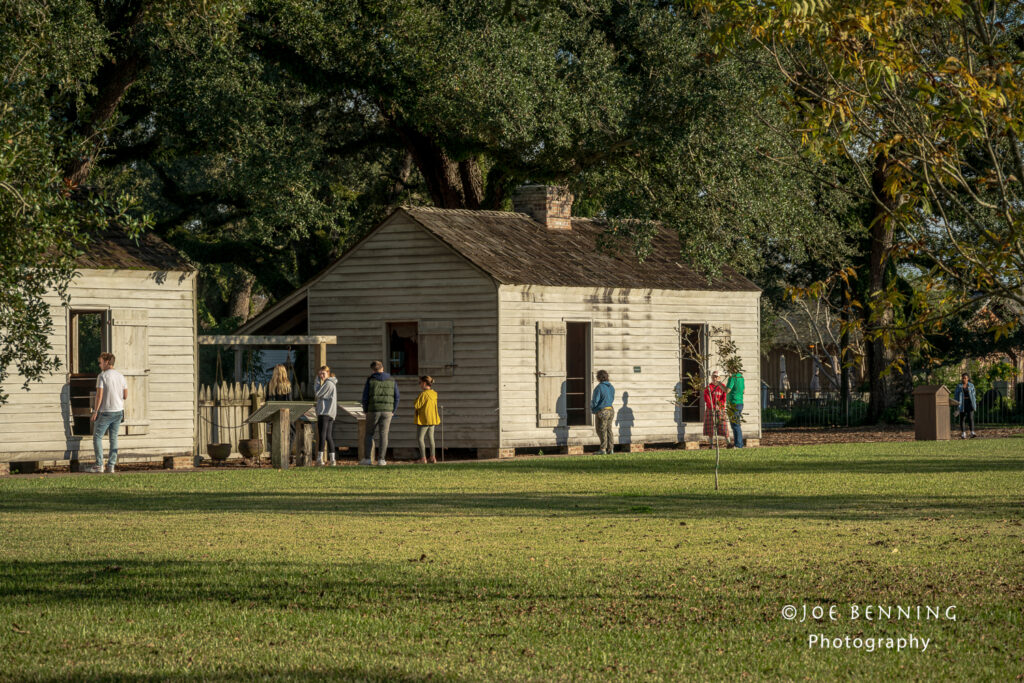Our initial stops in Louisiana included two plantation houses and grounds. The first was the Houmas House, named after the Houmas Indian tribe. The second was the Oak Alley plantation, named to reflect the magnificent collection of oak trees that form a canopy leading up to the entrance to the house.

The plantation houses were restored in order to look the way they did in the antebellum period. The Oak Alley plantation mostly produced sugarcane, while the crop of the Houmas House was more diversified.

The main houses on the plantations were elegant dwelling places, The irony of course is that they were built by slave labor. Oak Alley had about 220 enslaved people at its height (or depth, if you prefer).

We got to the mansions by walking over a levee to a parking lot where a Viking owned coach (AKA bus) waited to whisk us away to them. All in all the exhibits were stunning in their grace and elegance. But there were constant (and appropriate) reminders that it was slave labor that built the plantations.

JFB
